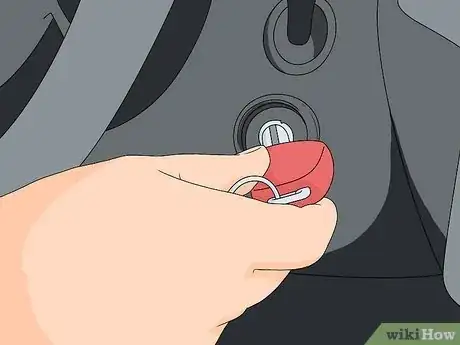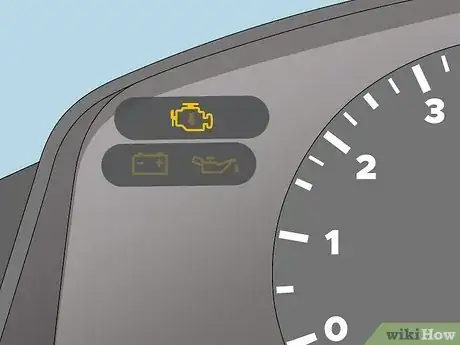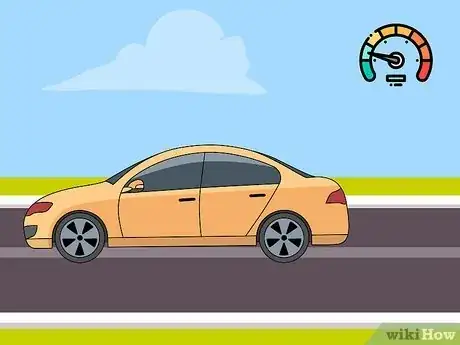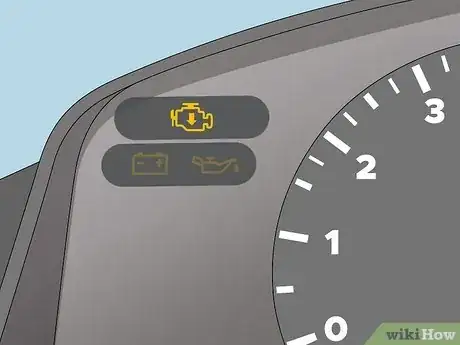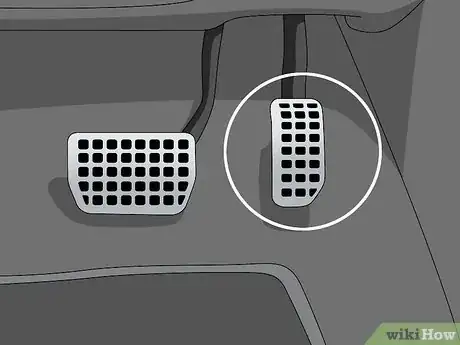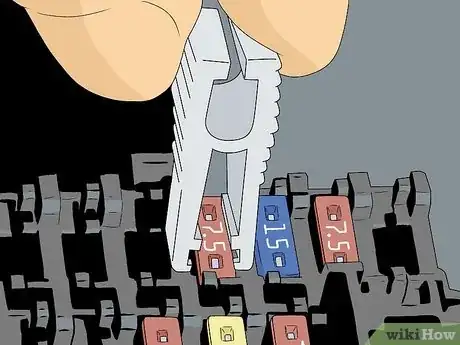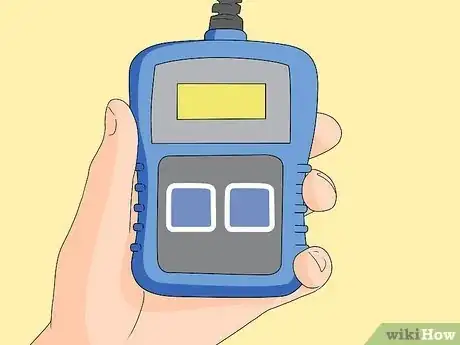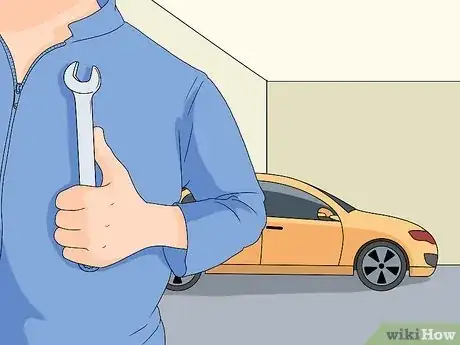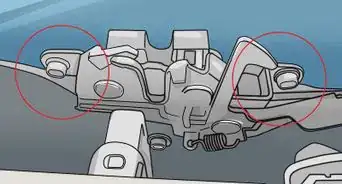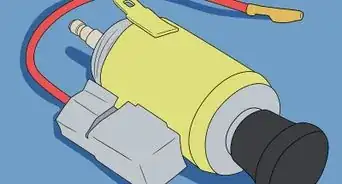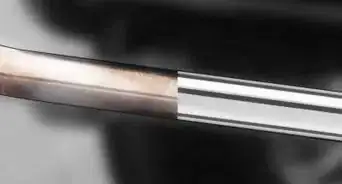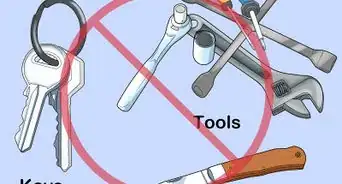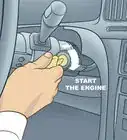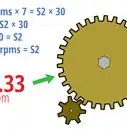This article was co-authored by Duston Maynes and by wikiHow staff writer, Christopher M. Osborne, PhD. Duston Maynes is an Automotive Repair Specialist at RepairSmith. Duston specializes in leading a team that handles a variety of automotive repairs including replacing spark plugs, front and rear brake pads, fuel pumps, car batteries, alternators, timing belts, and starter motors. Duston holds an Associate’s degree in Automotive/Diesel Technology from The Universal Technical Institute of Arizona and is a Certified Diagnostic Technician and Automobile Mechanics Technician through BMW STEP. RepairSmith received The 2020 Big Innovation Award by Business Intelligence Group and The Startup of the Year by the American Business Awards. RepairSmith was also included in Built in LA’s 50 Startups to Watch and The Business Intelligence Group’s 52 Names Leading the Way in Customer Service. RepairSmith offers in-home services to provide car owners convenient and complete auto repair everywhere.
This article has been viewed 15,738 times.
It’s hard to ignore the “reduced engine power” warning on your dashboard—because when it lights up, you’ll also feel a clear reduction in your vehicle’s acceleration and performance. If the cause is just a signal error, restarting your vehicle may solve the problem. Otherwise, it’s important to figure out the underlying issue and get it fixed ASAP. Keep reading for helpful info on what reduced engine power is, what can cause it, and how to deal with it.
Things You Should Know
- Shut off the engine, wait 10 seconds, then restart the vehicle to see if this resets the reduced engine power light—but this will only work if it’s a signal error.
- Avoid driving your vehicle when the reduced engine power light is on—instead, identify and repair the underlying problem that’s causing the warning light.
- Have a professional mechanic diagnose and repair the problem—only attempt repairs yourself if you’re fully confident in your auto repair skills and knowledge.
Steps
Quick Fix
-
1Shut off and restart the vehicle to reboot the electronic system. Modern vehicles are basically computers with wheels, so try the same technique you use for your phone or laptop—reboot it and hope that works! If the problem is a signal error and not an actual fault in the system, shutting off the vehicle for 10 seconds and restarting it may clear the issue.[1]
- If the light doesn’t come back on and your vehicle drives as normal, everything is probably fine. But it’s a good idea to get your vehicle checked out by a mechanic sooner rather than later.
-
2Take the vehicle in for repairs ASAP if the light comes back on. If the reduced engine power light returns immediately or shortly after you restart the vehicle, it’s not just a signal error—instead, you have a genuine issue that needs immediate attention. And this is rarely a DIY-friendly issue for the average vehicle owner. Your best bet is to have the vehicle checked and repaired by a trained professional.[2]
- Don’t bother trying to restart the vehicle again if the light comes back on after the first try. That’s your sign that there’s a bigger problem at hand.
Diagnosing the Problem
-
1Check the vehicle’s wires, cables, and belts if you have the know-how. Something as basic (but vital) as a frayed wire or a loose belt can cause a reduced engine power signal. If you have moderate or greater vehicle repair skills, go ahead and check all the wires, cables, hoses, belts, and other connectors for damage or disconnections. If you’re a typical DIYer, however, play it safe and have a professional mechanic do the diagnosis and any repairs.[8]
- Check the fuses at the fuse panel as well. With your owner’s manual as your guide, identifying and replacing a bad fuse is manageable for the average DIYer.
-
2Use an OBD-II reader to identify the likely problem. Buy or borrow an OBD-II reader, connect it to the designated port (according to your owner’s manual), and use the reader (according to its instructions) to get a diagnostic code from your vehicle’s computer. Search the internet for the given diagnostic code to learn about the problem.
- If the reader displays code P2135, for example, search online for “DTC P2135” or head to a website that offers a searchable list of DTCs (diagnostic trouble codes) for OBD-II readers.
- Code P2135 refers to mismatched readings between two throttle position sensors, which is one of the more common triggers for a reduced engine power light.
- Even if you have no intention of attempting the repair yourself, using a OBD-II reader is an easy way to figure out the likely problem before taking your car to a repair garage.
- If the reader displays code P2135, for example, search online for “DTC P2135” or head to a website that offers a searchable list of DTCs (diagnostic trouble codes) for OBD-II readers.
-
3Take the vehicle to a pro for repairs (unless you have advanced skills). Be honest with yourself about your vehicle repair capabilities here! It’s easy to cause even more damage, leading to an even larger repair bill, if you’re not sure what you’re doing under the hood.
- For example, if you do get code P2135, the repair may be a 30+ step process that’s beyond the capabilities of all but truly seasoned DIYers.[9]
References
- ↑ https://dashboardsymbols.com/2010/11/reduced-engine-power-light/
- ↑ https://dashboardsymbols.com/2010/11/reduced-engine-power-light/
- ↑ https://www.t3atlanta.com/blog/car-tips/reduced-engine-power-warning-light/
- ↑ https://vehiclefreak.com/how-to-bypass-reduced-engine-power/
- ↑ https://www.t3atlanta.com/blog/car-tips/reduced-engine-power-warning-light/
- ↑ https://vehiclefreak.com/how-to-bypass-reduced-engine-power/
- ↑ https://www.providencejournal.com/story/business/automotive/2020/02/14/car-doctor-chevrolet-cruze-stuck-in-reduced-engine-power/1706915007/
- ↑ https://vehiclefreak.com/how-to-bypass-reduced-engine-power/
- ↑ https://www.brakeandfrontend.com/tech-tip-reduced-engine-power-message-displayed-on-gm-vehicles/
